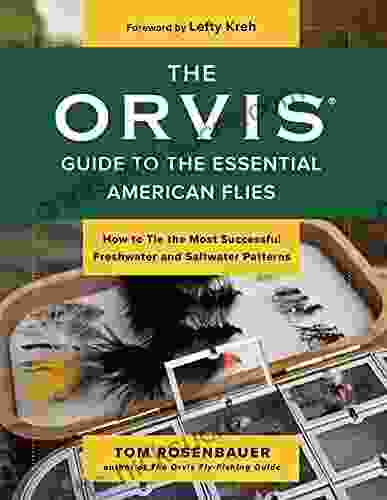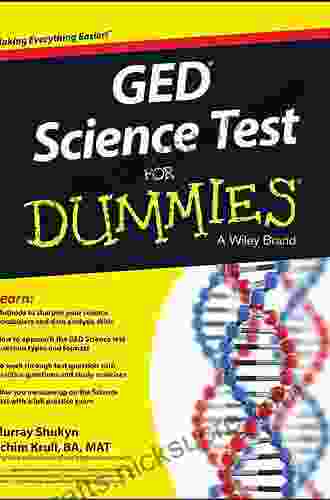How to Tie the Most Successful Freshwater and Saltwater Patterns for Unforgettable Catches

Whether you're casting your line into the tranquil waters of a river or the vast expanse of the ocean, the right lure or fly can make all the difference between a quiet day and a thrilling, rod-bending experience. This comprehensive guide will equip you with the knowledge and techniques to tie a range of successful patterns that will entice both freshwater and saltwater species to strike.
Crafting Irresistible Freshwater Patterns
Nymph Patterns: Masters of the Underwater World
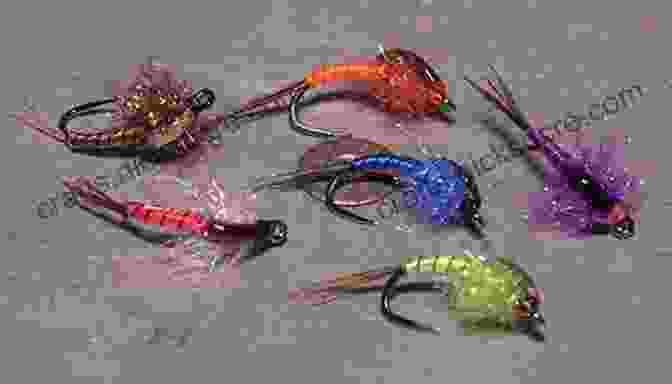
5 out of 5
| Language | : | English |
| File size | : | 38093 KB |
| Text-to-Speech | : | Enabled |
| Screen Reader | : | Supported |
| Enhanced typesetting | : | Enabled |
| Word Wise | : | Enabled |
| Print length | : | 206 pages |
Nymphs, the immature forms of aquatic insects, are a crucial food source for trout, bass, panfish, and other freshwater species. Imitating these tiny creatures with carefully tied flies can yield exceptional results.
- Pheasant Tail Nymph: A versatile pattern effective in various conditions, featuring a pheasant tail fiber body, bead head, and wire rib.
- Hare's Ear Nymph: Another popular choice, constructed with a hare's ear dubbing body, bead head, and bead chain eyes.
- Prince Nymph: A classic pattern with a peacock herl body, tungsten bead head, and soft hackle collar.
Streamer Patterns: Enticing Predators with Movement
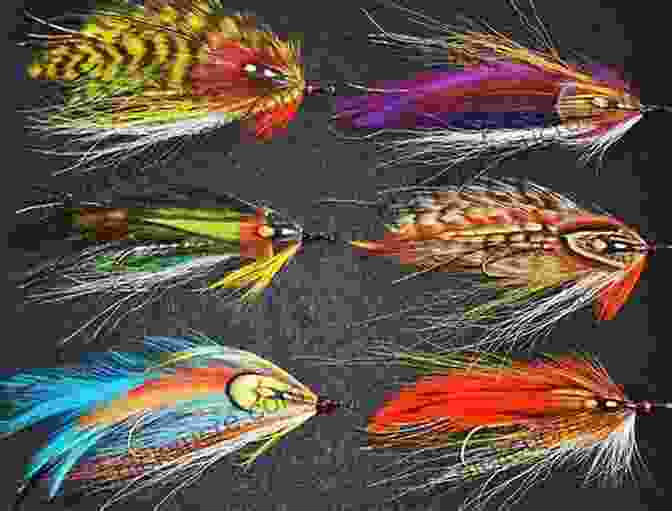
Streamers, designed to mimic small fish or injured baitfish, are irresistible to predatory species like trout, pike, and salmon. Their lifelike movements trigger an instinctive response in these aggressive fish.
- Wooly Bugger: A staple pattern consisting of chenille body, marabou tail, and hackle collar, available in various sizes and colors.
- Zonker: A versatile streamer featuring a rabbit strip body, flash tail, and weighted head.
- Clouser Minnow: A highly effective pattern with a weighted dumbbell eye, bucktail body, and synthetic tail.
Dry Fly Patterns: Deceptive Delicacies for Surface Feeders
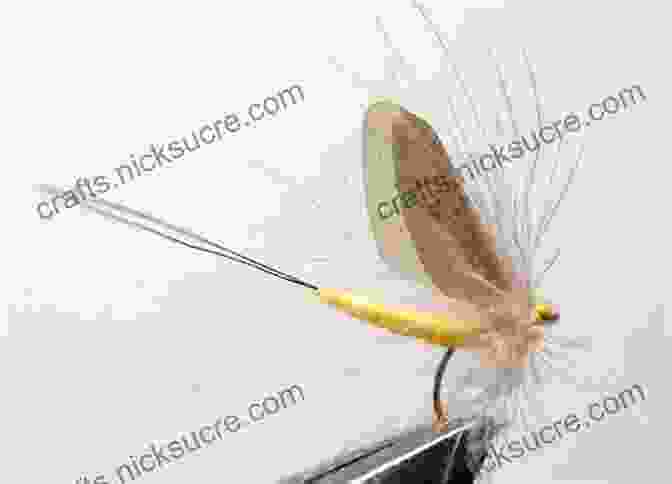
Dry flies, designed to float on the water's surface, mimic emerging mayflies, caddisflies, and other insects that trout and other surface-feeding species eagerly consume.
- Adams: An iconic pattern with a grizzly hackle, brown body, and collar hackle.
- Elk Hair Caddis: A lifelike imitation with an elk hair post, natural dubbing body, and hackle collar.
- Griffith's Gnat: A tiny and effective pattern, featuring a gray or brown body and a single feather wing.
Taming the Saltwater Frontier
Saltwater Flies: Lures for the Oceanic Arena
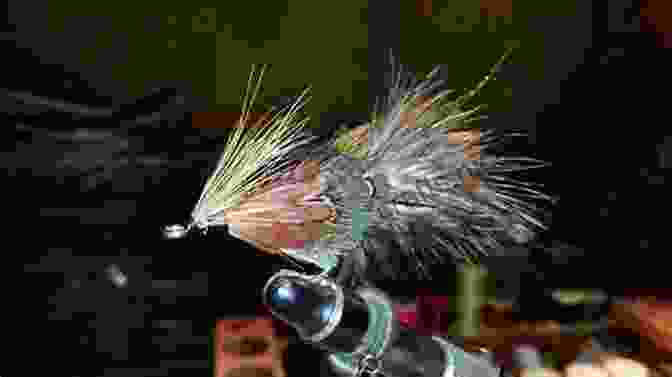
Saltwater fly fishing offers an exhilarating challenge, and the right flies can make a world of difference. These patterns are designed to withstand the rigors of the ocean and attract a range of species.
- Clouser Deep Minnow: A versatile pattern effective for striped bass, bluefish, and other predators, featuring a weighted dumbbell eye, bucktail body, and synthetic tail.
- Deceiver: Another classic saltwater fly, constructed with a weighted hook, flash tail, mylar body, and hackle collar.
- Gotcha: A simple but deadly pattern with a weighted cone head, synthetic fibers, and a brightly colored throat.
Saltwater Lures: Casting Options for Deep-Sea Adventures
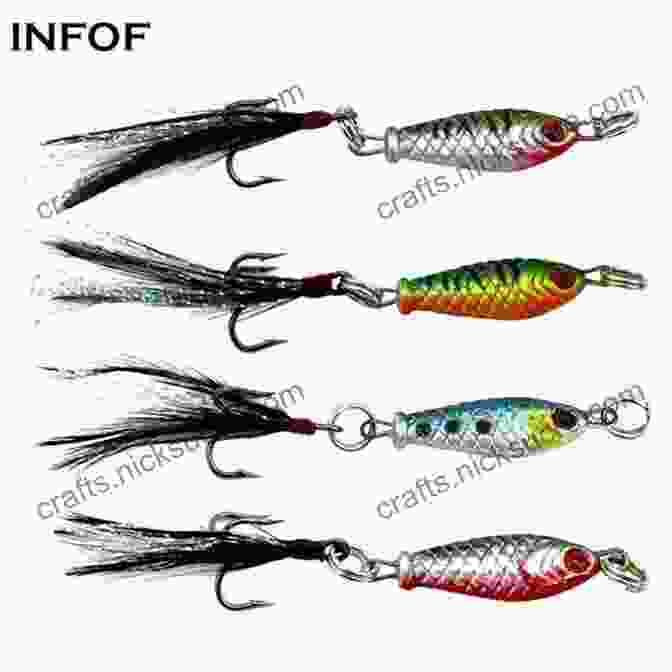
Saltwater lures offer an alternative to flies, providing a wider range of options for targeting larger species like tuna, marlin, and wahoo.
- Poppers: Topwater lures that imitate small baitfish breaking the surface, featuring a cupped face that creates a popping sound.
- Plugs: Diving lures designed to mimic various baitfish, ranging in size and shape to match specific prey.
- Jigs: Weighted lures with a soft plastic body and a single or multiple hooks, effective for bottom-dwelling species.
Beginners' Guide to Fly Tying
Fly tying can seem daunting at first, but with a few essential tools and some patience, you can start creating your own irresistible lures and flies. Here's a step-by-step guide to get you started:
- Gather your materials: You'll need a vise to hold the hook, a bobbin to hold the thread, a set of tying tools (scissors, pliers, dubbing needle, whip finisher),and your chosen tying materials (thread, feathers, dubbing, beads, etc.).
- Secure the hook in the vise: Place the hook in the vise and tighten it firmly to keep it in place.
- Start tying the thread: Attach the thread to the hook shank and wrap it around the hook кілька разів to create a secure base.
- Add your materials: Following the pattern instructions, begin adding the various materials to the hook, wrapping the thread around them to secure them.
- Finish the fly: Once all the materials are in place, finish the fly by wrapping the thread around the hook shank кілька разів and securing it with a whip finish or cement.
Tips for Advanced Fly Tyers
As you progress in your fly tying journey, you can explore advanced techniques to enhance the effectiveness and aesthetics of your creations:
- Experiment with different materials: Explore a wider range of natural and synthetic materials to create unique and effective patterns.
- Master advanced tying techniques: Learn techniques like thread spinning, dubbing brushes, and resin heads to add intricate details and improve durability.
- Study the behavior of fish: Observe the feeding habits and preferences of your target species to design patterns that accurately imitate their natural prey.
The art of tying successful freshwater and saltwater patterns is a rewarding endeavor that opens up a world of fishing possibilities. By following the techniques outlined in this guide, you can craft irresistible lures and flies that will enhance your angling experiences. Remember, practice, experimentation, and a keen eye for detail are key to becoming a skilled fly tyer. So, gather your materials, set up your vise, and embark on the exciting journey of creating your own fishing masterpieces.
5 out of 5
| Language | : | English |
| File size | : | 38093 KB |
| Text-to-Speech | : | Enabled |
| Screen Reader | : | Supported |
| Enhanced typesetting | : | Enabled |
| Word Wise | : | Enabled |
| Print length | : | 206 pages |
Do you want to contribute by writing guest posts on this blog?
Please contact us and send us a resume of previous articles that you have written.
 Fiction
Fiction Non Fiction
Non Fiction Romance
Romance Mystery
Mystery Thriller
Thriller SciFi
SciFi Fantasy
Fantasy Horror
Horror Biography
Biography Selfhelp
Selfhelp Business
Business History
History Classics
Classics Poetry
Poetry Childrens
Childrens Young Adult
Young Adult Educational
Educational Cooking
Cooking Travel
Travel Lifestyle
Lifestyle Spirituality
Spirituality Health
Health Fitness
Fitness Technology
Technology Science
Science Arts
Arts Crafts
Crafts DIY
DIY Gardening
Gardening Petcare
Petcare Emily K Neuburger
Emily K Neuburger Brandon Neice
Brandon Neice Susan Walton
Susan Walton Sherri Granato
Sherri Granato Thubten Yeshe
Thubten Yeshe Abigail Melton
Abigail Melton Abigail Hing Wen
Abigail Hing Wen John D Gordon
John D Gordon Tim Jarvis
Tim Jarvis Carl Vernon
Carl Vernon David Lipsky
David Lipsky Dan Werb
Dan Werb Tali Edut
Tali Edut Marie Cirano
Marie Cirano Collins Kids
Collins Kids Adam Freeman
Adam Freeman Sarah Luddington
Sarah Luddington Christopher Monahan
Christopher Monahan Lisa M Given
Lisa M Given Gary Sakuma
Gary Sakuma Rob Gray
Rob Gray Sissy Goff
Sissy Goff Gail Buckland
Gail Buckland David Rensin
David Rensin Mark Strom
Mark Strom Brad Brewer
Brad Brewer Robert Fritz
Robert Fritz Bill Loguidice
Bill Loguidice Blake D Bauer
Blake D Bauer Paula Deen
Paula Deen John Hancock
John Hancock Abdelkader Nouiri
Abdelkader Nouiri Marc Dando
Marc Dando Christophe Jaffrelot
Christophe Jaffrelot Charles Thomas Jr
Charles Thomas Jr Gregor Clark
Gregor Clark Adam J Rosh
Adam J Rosh Michael Egan
Michael Egan Amber Fox
Amber Fox Christopher Pike
Christopher Pike Sophie Mccartney
Sophie Mccartney Rose Ann Hudson
Rose Ann Hudson Amby Burfoot
Amby Burfoot Neil Oliver
Neil Oliver Jim Morekis
Jim Morekis Adam Chandler
Adam Chandler Adam Frank
Adam Frank Tomos Forrest
Tomos Forrest Chella Quint
Chella Quint Jennifer Ackerman
Jennifer Ackerman Michael Baigent
Michael Baigent Abby Haight
Abby Haight Shari Eskenas
Shari Eskenas J Robert King
J Robert King Jeremy Miles
Jeremy Miles Agustin Fuentes
Agustin Fuentes Alan Robertson
Alan Robertson Erika Fatland
Erika Fatland Ann Mariah Cook
Ann Mariah Cook Garrett Mcnamara
Garrett Mcnamara Kit Bauman
Kit Bauman Andy Dumas
Andy Dumas Caroline Kaufman
Caroline Kaufman Abigail Tucker
Abigail Tucker Megan Lane
Megan Lane Thomas Wilson
Thomas Wilson Louise Thaden
Louise Thaden Barry Robinson
Barry Robinson Domenica Marchetti
Domenica Marchetti Abby Mcallister
Abby Mcallister Stephen R Lawhead
Stephen R Lawhead John Kean
John Kean Debbie Ford
Debbie Ford Steve Mcmenamin
Steve Mcmenamin Rory Miller
Rory Miller Dawson Church
Dawson Church Maureen Duffin Ward
Maureen Duffin Ward Ralph Villiger
Ralph Villiger Jay Dawes
Jay Dawes E P Marcellin
E P Marcellin Seth Kugel
Seth Kugel Adam Galinsky
Adam Galinsky Susan Zeppieri
Susan Zeppieri Peter Sagal
Peter Sagal Carl Jones
Carl Jones Reinette Biggs
Reinette Biggs Rania Abouzeid
Rania Abouzeid Xiuhtezcatl Martinez
Xiuhtezcatl Martinez Tomi Adeyemi
Tomi Adeyemi Virginia Smith Harvey
Virginia Smith Harvey Sarah Moore
Sarah Moore Arthur Atchabahian
Arthur Atchabahian George John Romanes
George John Romanes Jeremy Paxman
Jeremy Paxman Curt Lader
Curt Lader Alvin Alexander
Alvin Alexander Genius Reads
Genius Reads Andrea M Nelson Royes
Andrea M Nelson Royes Chris Jericho
Chris Jericho Andrew Campanella
Andrew Campanella Garo Yepremian
Garo Yepremian Papus
Papus Sorin Dumitrascu
Sorin Dumitrascu John Caig
John Caig Barbara A Lewis
Barbara A Lewis Al Barkow
Al Barkow Ian Mcleod
Ian Mcleod Marlene Wagman Geller
Marlene Wagman Geller Ben Cohen
Ben Cohen Lucio Russo
Lucio Russo Aliza Green
Aliza Green Daphne Poltz
Daphne Poltz Aaron J Perry
Aaron J Perry Sheila Lamb
Sheila Lamb Brian L Gorman
Brian L Gorman Corinne Andrews
Corinne Andrews Abinash Das
Abinash Das Farah Shabazz Ii
Farah Shabazz Ii David Simon
David Simon Rosie Pope
Rosie Pope William Deresiewicz
William Deresiewicz Lillian Cumic
Lillian Cumic Timothy Phelps
Timothy Phelps Gil Capps
Gil Capps George J Hademenos
George J Hademenos Annie Nicholas
Annie Nicholas Bobby Reyes
Bobby Reyes Mary Wong
Mary Wong Joe Simpson
Joe Simpson Betsy Miller
Betsy Miller Abigail Owen
Abigail Owen Mikki Daughtry
Mikki Daughtry O Thomas Gift
O Thomas Gift Rachel Caine
Rachel Caine Eze Ugbor
Eze Ugbor Phong Thong Dang
Phong Thong Dang Ron Hotchkiss
Ron Hotchkiss Mark Januszewski
Mark Januszewski Phil Gaimon
Phil Gaimon Elisabetta Viggiani
Elisabetta Viggiani Amelia Whitmore
Amelia Whitmore Walter Browder
Walter Browder Casey Robson
Casey Robson Benjamin Roberts
Benjamin Roberts David Feddes
David Feddes Man Kam Lo
Man Kam Lo Kathy Koch Phd
Kathy Koch Phd David Winner
David Winner Ned Johnson
Ned Johnson Adam Lazarus
Adam Lazarus Norton Juster
Norton Juster Ian Davis
Ian Davis Kel Carpenter
Kel Carpenter Adam Braus
Adam Braus Kim Gosselin
Kim Gosselin Maxine Levaren
Maxine Levaren Stephen A Mitchell
Stephen A Mitchell Rick Sekuloski
Rick Sekuloski Goodman Publishing
Goodman Publishing Adam Koch
Adam Koch Laurence Steinberg
Laurence Steinberg Robert Allans
Robert Allans Devika Primic
Devika Primic M J Parisian
M J Parisian Irene Lewis Mccormick
Irene Lewis Mccormick Moon Ho Jung
Moon Ho Jung Kevin A Morrison
Kevin A Morrison Tom Jackson
Tom Jackson Jasna Tuta
Jasna Tuta Erik Scott De Bie
Erik Scott De Bie Ilsa J Bick
Ilsa J Bick Lucy Letcher
Lucy Letcher Steve Rosenberg
Steve Rosenberg Jon Butterworth
Jon Butterworth Nick Holt
Nick Holt Stuart Firestein
Stuart Firestein Deborah Madison
Deborah Madison Charles Fernyhough
Charles Fernyhough Kristin Berry
Kristin Berry Liza Angela
Liza Angela David Warriner
David Warriner Pamela Druckerman
Pamela Druckerman Tom Mccarthy
Tom Mccarthy Lavinia Collins
Lavinia Collins Randi Hutter Epstein
Randi Hutter Epstein Taylan Hoca
Taylan Hoca Achref Hassini
Achref Hassini Lynn Alley
Lynn Alley William Hamilton Gibson
William Hamilton Gibson Teresa Finney
Teresa Finney Sally Clarkson
Sally Clarkson An American Citizen
An American Citizen Jacob Neumann
Jacob Neumann Kaylynn Flanders
Kaylynn Flanders Tom Migdalski
Tom Migdalski Lisa Heffernan
Lisa Heffernan Claire Santry
Claire Santry Horace Kephart
Horace Kephart Abby Hafer
Abby Hafer Aaron Mahnke
Aaron Mahnke Abridged Ed Edition Kindle Edition
Abridged Ed Edition Kindle Edition Alexander Nehamas
Alexander Nehamas Achim K Krull
Achim K Krull Vivienne Sanders
Vivienne Sanders Matt Warshaw
Matt Warshaw Jennifer Greene
Jennifer Greene Terry Palechuk
Terry Palechuk Conrad Bauer
Conrad Bauer Vikas Kakwani
Vikas Kakwani Chris Worfolk
Chris Worfolk Justin Driver
Justin Driver Brigitte Jordan
Brigitte Jordan Kayla Cottingham
Kayla Cottingham Scott Butler
Scott Butler Linda Sarris
Linda Sarris Michael L Bloomquist
Michael L Bloomquist Glen Finland
Glen Finland Linford Stutzman
Linford Stutzman Lin Wellford
Lin Wellford Brian Hoggard
Brian Hoggard Vince Kotchian
Vince Kotchian Melodie M Davis
Melodie M Davis Abby Sunderland
Abby Sunderland Sheldon Axler
Sheldon Axler Richelle Mead
Richelle Mead Tamora Pierce
Tamora Pierce Og Mandino
Og Mandino Michael Johnson
Michael Johnson Zoe Hamlet Silva
Zoe Hamlet Silva Steven Alan Childress
Steven Alan Childress Louise Pickford
Louise Pickford Stephanie Puglisi
Stephanie Puglisi Stephanie Zeiss
Stephanie Zeiss James Heberd
James Heberd Michael Crawley
Michael Crawley Colin Hunter
Colin Hunter Michelle Hodkin
Michelle Hodkin Charlie Barker
Charlie Barker Jim Willis
Jim Willis Phil Boyle
Phil Boyle Laura Ray
Laura Ray Adam Lashinsky
Adam Lashinsky Jack Cavanaugh
Jack Cavanaugh Jason Korol
Jason Korol Lisa M Schab
Lisa M Schab Al Baird
Al Baird Stacy Eaton
Stacy Eaton Chaz Scoggins
Chaz Scoggins Renda Dionne Madrigal
Renda Dionne Madrigal Carley Roney
Carley Roney Anthony Wilkenson
Anthony Wilkenson T L Lowery
T L Lowery Chashiree M
Chashiree M Programming Languages Academy
Programming Languages Academy Scott Parsons
Scott Parsons Winifred Conkling
Winifred Conkling Aaron Blight
Aaron Blight Kirk Bailey
Kirk Bailey Lisa Latimer
Lisa Latimer Wayne Westcott
Wayne Westcott Stephen Abbott
Stephen Abbott Abigail Alling
Abigail Alling Matt Owens
Matt Owens James Surowiecki
James Surowiecki Peter David
Peter David Sarah K L Wilson
Sarah K L Wilson Gerald A Voorhees
Gerald A Voorhees Martha Gellhorn
Martha Gellhorn Nancy Mohrbacher
Nancy Mohrbacher Emily Suzanne Clark
Emily Suzanne Clark Paul Mclerran
Paul Mclerran Kemi Iwalesin
Kemi Iwalesin Jane Gross
Jane Gross Ken Retallic
Ken Retallic Abigail Pogrebin
Abigail Pogrebin Craig Timberg
Craig Timberg Adam Becker
Adam Becker Al Desetta
Al Desetta Christopher Knight
Christopher Knight Baba Ifa Karade
Baba Ifa Karade Jeremy Shinewald
Jeremy Shinewald Dr Robert Pasahow
Dr Robert Pasahow Michael N Mitchell
Michael N Mitchell Randy Walker
Randy Walker Bruce Van Brunt
Bruce Van Brunt Abu Mussab Wajdi Akkari
Abu Mussab Wajdi Akkari Shuai Huang
Shuai Huang Maya Lang
Maya Lang G Bailey
G Bailey Douglas W Hubbard
Douglas W Hubbard Israel Finkelstein
Israel Finkelstein Andrew Skurka
Andrew Skurka Richard Sattora
Richard Sattora Amber Domoradzki
Amber Domoradzki Jimmy Houston
Jimmy Houston Joy Neighbors
Joy Neighbors Dmv Test Bank
Dmv Test Bank Axie Oh
Axie Oh Richard Lighthouse
Richard Lighthouse Gerry Donohue
Gerry Donohue Abdul Foster
Abdul Foster Aaron Mccargo
Aaron Mccargo Eduardo Duran
Eduardo Duran Charles L Byrne
Charles L Byrne Scott Shaw
Scott Shaw Ed Engle
Ed Engle Ken Springer
Ken Springer Ronald Kaine
Ronald Kaine Sean Lewis
Sean Lewis Larry Carpenter
Larry Carpenter Rex Ogle
Rex Ogle Miranda Kenneally
Miranda Kenneally Fred Fields
Fred Fields Felice Fox
Felice Fox Aaron James
Aaron James Adam Boduch
Adam Boduch Aaron Oster
Aaron Oster Helen C Rountree
Helen C Rountree Shannon Hale
Shannon Hale Claire Ahn
Claire Ahn T L Christianson
T L Christianson Lynn E Ponton
Lynn E Ponton Rolf Mowatt Larssen
Rolf Mowatt Larssen Aiden Thomas
Aiden Thomas Cornel West
Cornel West Kenn Kaufman
Kenn Kaufman Richard Langer
Richard Langer Alicia Silverstone
Alicia Silverstone Suzanne Corkin
Suzanne Corkin Marvin Valerie Georgia
Marvin Valerie Georgia Dan Morris
Dan Morris Deborah Beck Busis
Deborah Beck Busis Adam Kimelman
Adam Kimelman Paul Chiasson
Paul Chiasson Katie Lear
Katie Lear Iain Highfield
Iain Highfield Abbey Curran
Abbey Curran Hans C Ohanian
Hans C Ohanian Heather Lynn
Heather Lynn Abhishek V R
Abhishek V R Natasha Preston
Natasha Preston Achille Rubini
Achille Rubini Gisle Solhaug
Gisle Solhaug Ron Jones
Ron Jones Uri Bram
Uri Bram Adam H Balen
Adam H Balen Elena Aguilar
Elena Aguilar Sasha Abramsky
Sasha Abramsky John Taylor
John Taylor Gloria Atanmo
Gloria Atanmo Adam D Scott
Adam D Scott Cassandra Eason
Cassandra Eason Jennifer Shannon
Jennifer Shannon Irakli Makharadze
Irakli Makharadze Gayle Forman
Gayle Forman Jennifer Finney Boylan
Jennifer Finney Boylan Jenny Han
Jenny Han Jeff Bauman
Jeff Bauman Monica Sorrenson
Monica Sorrenson Sarah Maslin Nir
Sarah Maslin Nir Sean Mcmanus
Sean Mcmanus Christina Hoff Sommers
Christina Hoff Sommers Helen Scales
Helen Scales Stefan Ball
Stefan Ball Tony Soper
Tony Soper Darrin Bergman
Darrin Bergman Jeremy Roenick
Jeremy Roenick David G Brown
David G Brown Adam Enaz
Adam Enaz Stephen Brennan
Stephen Brennan R L Stine
R L Stine Tom Rosenbauer
Tom Rosenbauer Ada Calhoun
Ada Calhoun Alicia C Simpson
Alicia C Simpson Ariana Eagleton
Ariana Eagleton Paul Schneider
Paul Schneider Kate Rope
Kate Rope Barbara Natterson Horowitz
Barbara Natterson Horowitz Abbas Kazerooni
Abbas Kazerooni Charles H Kraft
Charles H Kraft Barbara Decker
Barbara Decker Meg Keys
Meg Keys Roman Dial
Roman Dial Todd Graves
Todd Graves Scott Meyers
Scott Meyers Hillary Allen
Hillary Allen Barry Dainton
Barry Dainton Abigail Marshall
Abigail Marshall Edward J Larson
Edward J Larson Jennifer L Hunt
Jennifer L Hunt Lisa Robertson
Lisa Robertson Michelle Obama
Michelle Obama Aaron Lee Johnson
Aaron Lee Johnson Charles C Patrick
Charles C Patrick Carolyn Jessop
Carolyn Jessop Christian Beamish
Christian Beamish Drew Harris
Drew Harris Ann Frederick
Ann Frederick Fumio Sasaki
Fumio Sasaki Carmen Moreno
Carmen Moreno Harley Rustad
Harley Rustad Chuck Callaway
Chuck Callaway Brian Greene
Brian Greene Aaron Graves
Aaron Graves Alifya And Umesh Mohite
Alifya And Umesh Mohite Martha C Nussbaum
Martha C Nussbaum Pearson Education
Pearson Education Christopher S Stewart
Christopher S Stewart Vivian Gussin Paley
Vivian Gussin Paley Gavin D J Harper
Gavin D J Harper Beth Newell
Beth Newell Abigail Hair
Abigail Hair Steve Roper
Steve Roper Al Yellon
Al Yellon Lynn Rush
Lynn Rush Laura Sebastian
Laura Sebastian Chiara Giuliani
Chiara Giuliani Leigh Bardugo
Leigh Bardugo Katrina Kahler
Katrina Kahler Scott Carney
Scott Carney Miriam Forman Brunell
Miriam Forman Brunell Michel Roy
Michel Roy Winston Chang
Winston Chang Emma Crewe
Emma Crewe Catherine Ryan Hyde
Catherine Ryan Hyde Rachael Ray
Rachael Ray Jack Moore
Jack Moore Arthur Turrell
Arthur Turrell Asato Asato
Asato Asato Bathroom Readers Institute
Bathroom Readers Institute Aaron Hahn
Aaron Hahn Andy Couturier
Andy Couturier Dan Shideler
Dan Shideler Sharon Boyd
Sharon Boyd Ryan Smithson
Ryan Smithson Stephen Gray
Stephen Gray Laura Peyton Roberts
Laura Peyton Roberts Lindsey Ellison
Lindsey Ellison Emily J Taylor
Emily J Taylor Jessie Hartland
Jessie Hartland Aaron Reed
Aaron Reed Lois G Schwoerer
Lois G Schwoerer Lisa Pineda
Lisa Pineda Achusim Michael
Achusim Michael Tim Larkin
Tim Larkin Aaron Reed Msn Crna
Aaron Reed Msn Crna Eugene H Merrill
Eugene H Merrill Abraham Silberschatz
Abraham Silberschatz Laura Gao
Laura Gao Steve Griffith
Steve Griffith Peter Harrison
Peter Harrison Zoyla Arana
Zoyla Arana Jay Ruud
Jay Ruud Allan Sand
Allan Sand Sam J Miller
Sam J Miller Christopher Black
Christopher Black Richard Martin
Richard Martin Abbi Glines
Abbi Glines Bill Mckibben
Bill Mckibben Daniel Carter Beard
Daniel Carter Beard Lenyfer Garrido
Lenyfer Garrido Adam Benshea
Adam Benshea Laurie Chaikind Mcnulty Lcsw C
Laurie Chaikind Mcnulty Lcsw C Sheri Van Dijk
Sheri Van Dijk Gladys Chepkirui Ngetich
Gladys Chepkirui Ngetich Mary Roach
Mary Roach Jessica Hepburn
Jessica Hepburn Barbara Fox
Barbara Fox Adam J Cox
Adam J Cox Lee Sandlin
Lee Sandlin Pat Chargot
Pat Chargot Michael Gruenbaum
Michael Gruenbaum Sam Jarman
Sam Jarman Clara Shaper
Clara Shaper Dick Edie
Dick Edie Debbie Elicksen
Debbie Elicksen Judi Kesselman Turkel
Judi Kesselman Turkel P S Page
P S Page Robert Reid
Robert Reid Randall Hyde
Randall Hyde Cosmas Inyang
Cosmas Inyang
Light bulbAdvertise smarter! Our strategic ad space ensures maximum exposure. Reserve your spot today!

 Stanley BellComplete Hands-On Guide to Modern Web and Mobile Development with React.js...
Stanley BellComplete Hands-On Guide to Modern Web and Mobile Development with React.js...
 Edgar Allan PoeHow a High-Handicap Golfer Can Become a Single-Digit Golfer: A Journey from...
Edgar Allan PoeHow a High-Handicap Golfer Can Become a Single-Digit Golfer: A Journey from... Braden WardFollow ·11.2k
Braden WardFollow ·11.2k Holden BellFollow ·5.7k
Holden BellFollow ·5.7k Jeremy MitchellFollow ·18.2k
Jeremy MitchellFollow ·18.2k Bradley DixonFollow ·11.4k
Bradley DixonFollow ·11.4k Mikhail BulgakovFollow ·12.3k
Mikhail BulgakovFollow ·12.3k Dwight BellFollow ·14.7k
Dwight BellFollow ·14.7k Gilbert CoxFollow ·8.9k
Gilbert CoxFollow ·8.9k Clark BellFollow ·6.6k
Clark BellFollow ·6.6k

 Doug Price
Doug PriceTracing the Evolution of Modern Psychoanalytic Thought:...
Psychoanalysis, once considered a radical...

 Devin Ross
Devin RossThe Digital Role Playing Game Approaches To Digital Game...
These are just a few of the many...

 F. Scott Fitzgerald
F. Scott FitzgeraldHistory from Things: Essays on Material Culture
History from Things:...
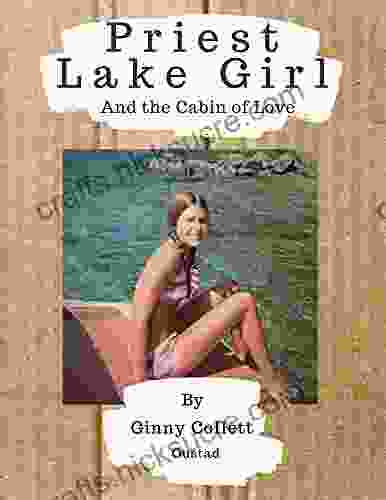
 Percy Bysshe Shelley
Percy Bysshe ShelleyThe Priest Lake Girl and the Cabin of Love: A True Story...
The Murder On...
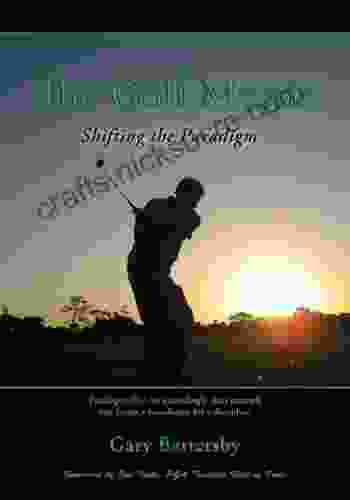
 Isaiah Powell
Isaiah PowellThe Golf Mystic: Dick Edie's Unconventional Approach to...
In the annals of golf history, the name Dick...
5 out of 5
| Language | : | English |
| File size | : | 38093 KB |
| Text-to-Speech | : | Enabled |
| Screen Reader | : | Supported |
| Enhanced typesetting | : | Enabled |
| Word Wise | : | Enabled |
| Print length | : | 206 pages |


